Middlesbrough’s history has been one of swift growth and advancement.
You may not think it looking around the town today, where the retail sector has taken a severe hit and many of the town’s commercial buildings lie empty.
However, this town, which is less than 200 years old, grew very quickly to become Teesside’s major commercial centre. It has the region’s tallest office buildings, and the most retail units. From what was a small township near the river, it spread south taking over smaller, older villages like Acklam, Linthorpe and Newport.
As it grew, many grand buildings were constructed during the Victorian era, reflecting its newfound (at the time) wealth and status.
Many of these buildings have sadly gone now, but there are also some left which reflect the glory of Middlesbrough as the Infant Hercules, as it was once described.
Here are the grandest ones you can still see today:
Town Hall
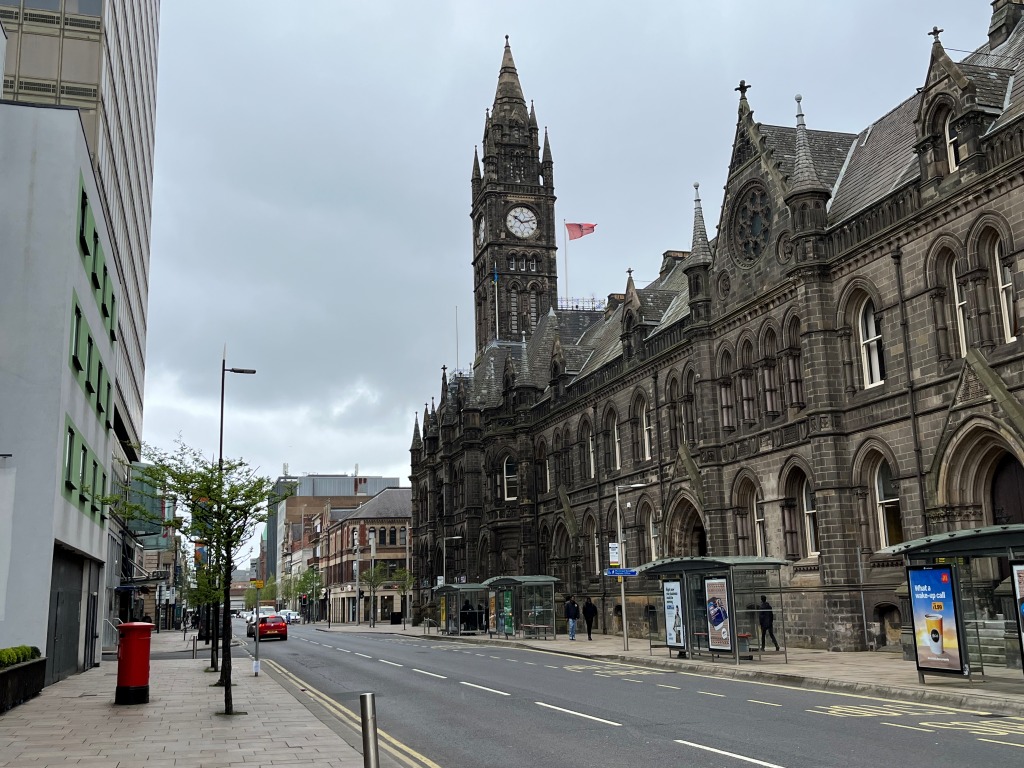
Today’s Town Hall in Middlesbrough was built in 1883-1889 to replace the older, smaller structure located in the old Market Place in St Hilda’s. It was designed by George Hoskins, who designed many Gothic structures across the north of England (including Manchester City Hall, which is very similar in design).
It is home to Middlesbrough Council today, as well as a large theatre and concert venue. Originally it incorporated the town’s jail and fire station.
Railway Station
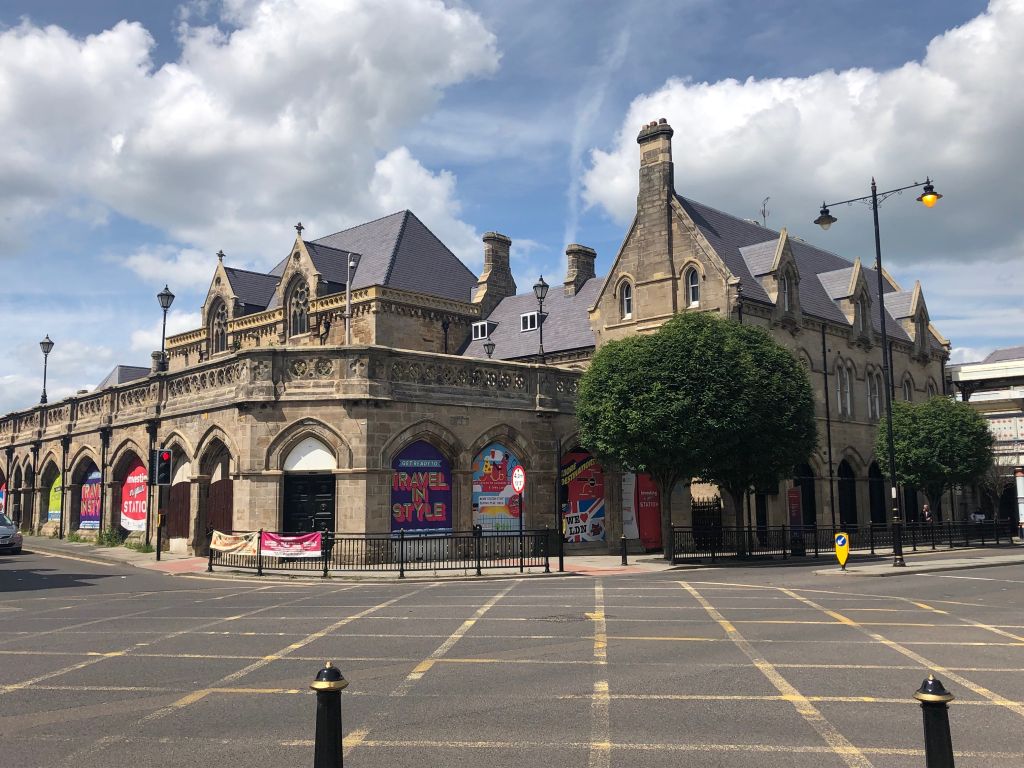
Today’s railway station in Middlesbrough is one of the largest and grandest structures in town, and has benefitted from a recent refurbishment. However, when it was first built, it was much larger with a large glass canopy over the tracks. This was sadly destroyed during a bombing raid in World War II.
You may realise that Middlesbrough exists because of the railways, when the Stockton & Darlington Railway extended to Port Darlington, which later spawned this new town. Originally the tracks terminated at a smaller station nearer the Transporter Bridge. This station is actually the third, having been built on a smaller predecessor.
Empire Theatre
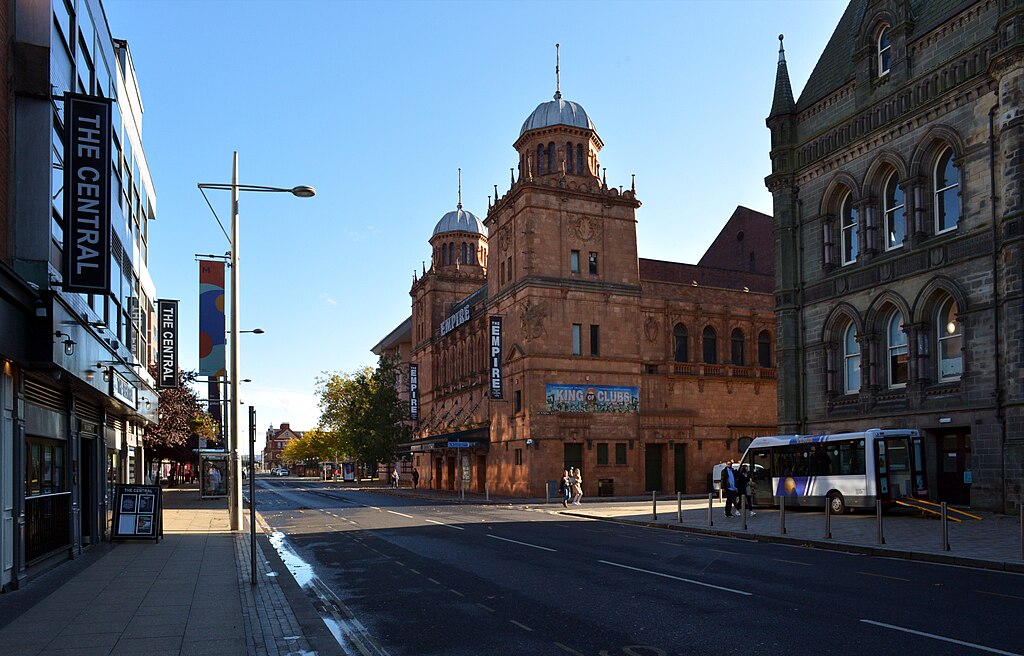
habiloid / The Middlesbrough Empire, Corporation Road, Middlesbrough
A popular nightclub and live music venue today, the Empire Palace of Varieties on Corporation Road is one of the most elegant buildings in Middlesbrough today, with a terracotta exterior. Built in 1897 as a music hall, it saw acts like Harry Houdini and Charlie Chaplin perform here over the years.
As the popularity of live entertainment declined in favour of cinema, the Empire later became a bingo hall, before being resurrected as today’s venue. Thankfully much of the original interior has been retained.
Forbes Buildings
South along Linthorpe Road, the Forbes Buildings are a grand former bakery and stables which has been converted into small retail units. It was built in around 1899 by R. Lofthouse & Sons (Middlesbrough), for John Forbes, and you can see the Forbes Buildings name in stone on the outside.
Transporter Bridge
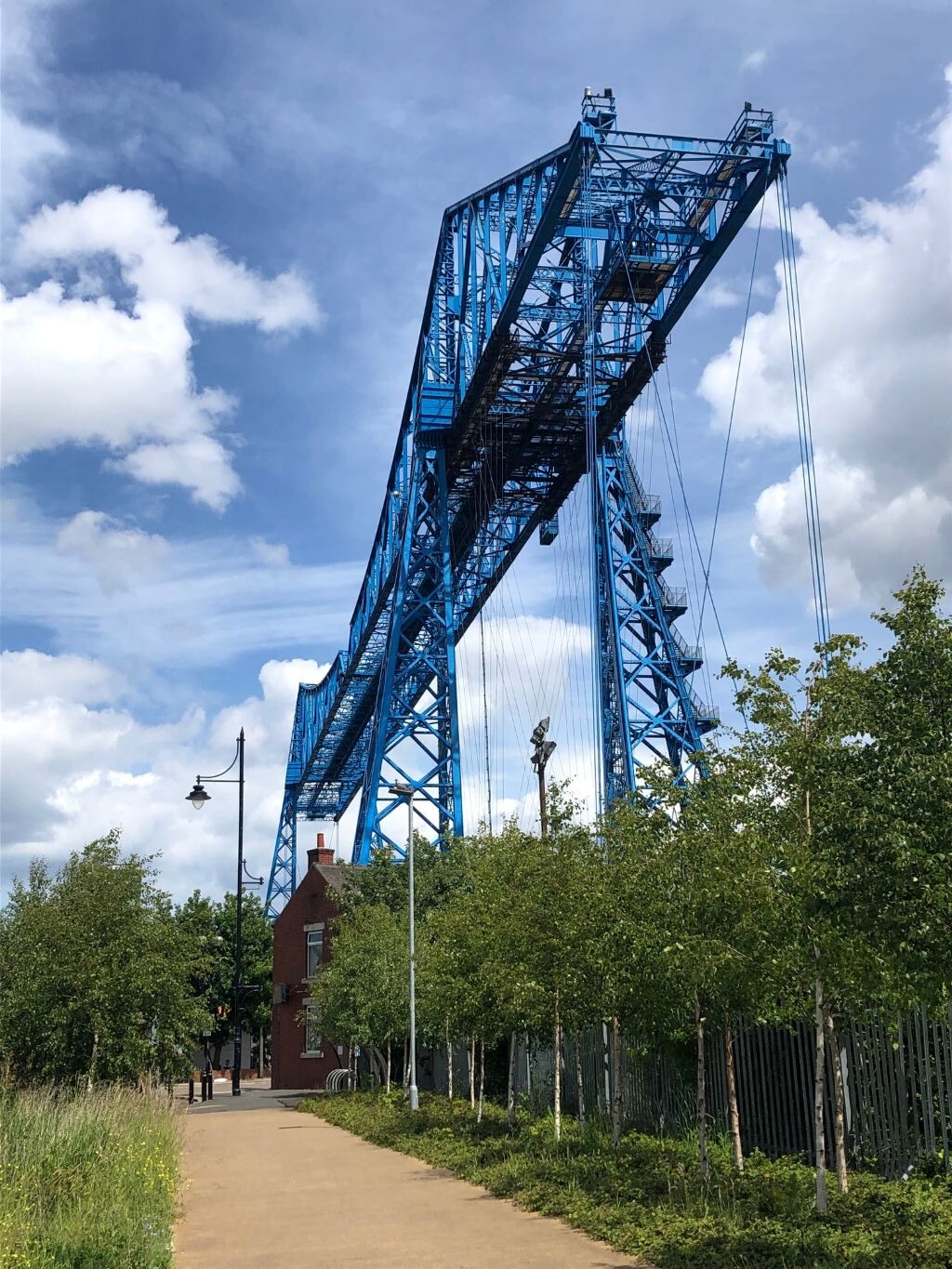
Perhaps not a grand building in the traditional sense, the Transporter Bridge is certainly one of Middlesbrough’s most recognisable and impressive structures.
Built in 1911, it replaced the earlier ferries which used to transport workers across the River Tees to/from Port Clarence. Because the river was active with shipping, it had to be tall, leaving the waterway free for traffic to pass underneath.
Sadly, the cost and effort to maintain such a historic and fragile structure has left it out of action for many years. The gondola which transported cars and passengers across is no longer in place, and efforts to secure its future and return to service are currently halted.
Acklam Hall
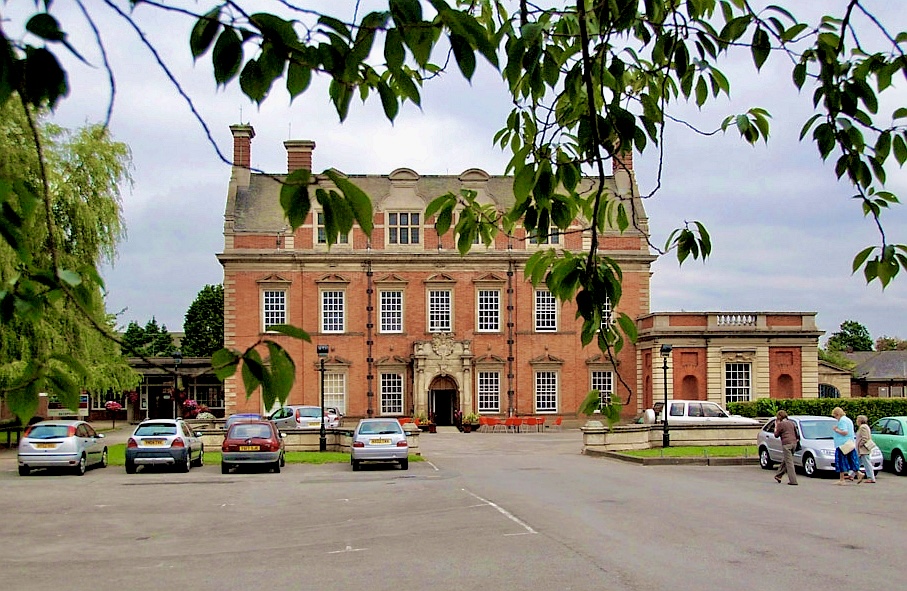
Originally uploaded by Djdaedalus (Transferred by Hogweard), CC BY-SA 3.0 <http://creativecommons.org/licenses/by-sa/3.0/>, via Wikimedia Commons
Further south from central Middlesbrough, Acklam Hall is the town’s only Grade I listed building. Built in the 1680s for the Hustler family, it has a long and interesting history.
First, as a private residence in extensive grounds, and then later as a school and college.
Today, it is a private venue for meetings, conferences and weddings. Thankfully it still retains its architectural features both internally and externally.
Commerce House
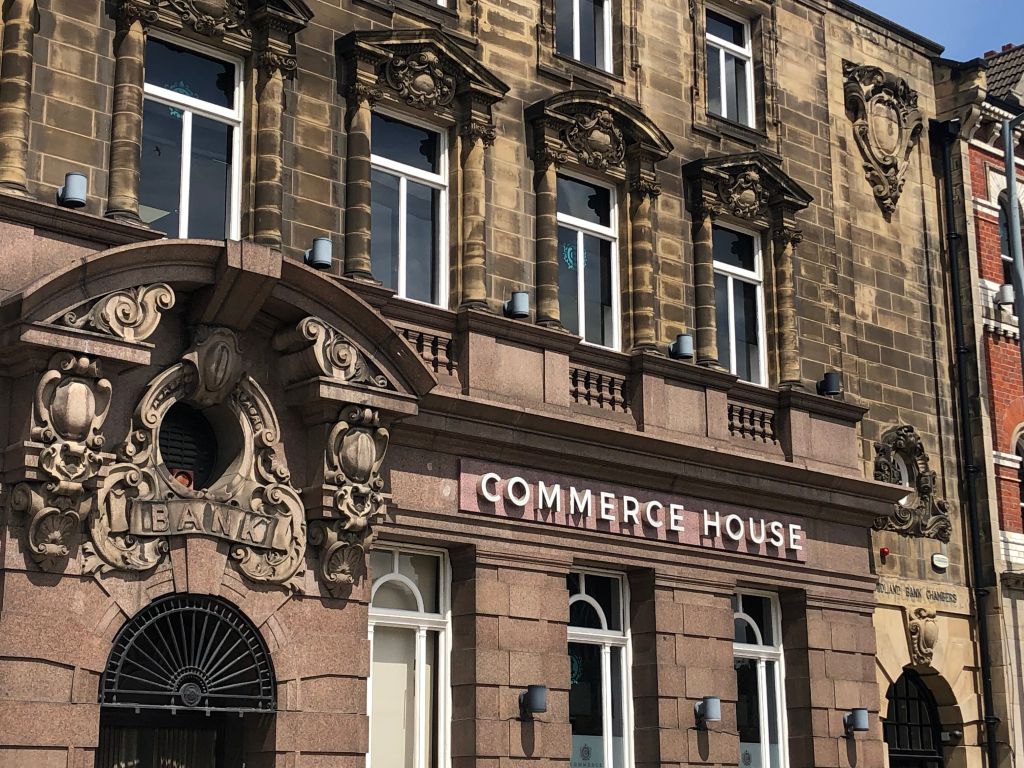
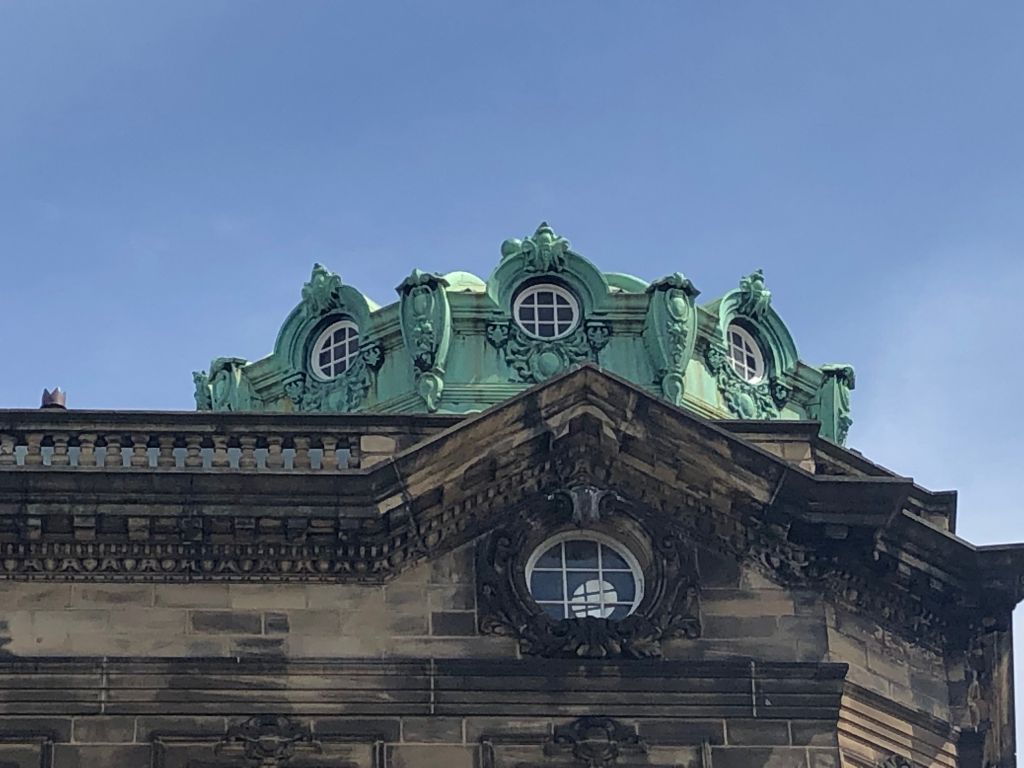
On the corner of Exchange Square and Albert Road, this iconic building is known for its copper cupola and grand Baroque style architecture.
Built as a bank in 1901, the cupola was once part of the private apartment for the bank manager and his family.
The building has had a number of different uses in recent years.
Zetland Hotel
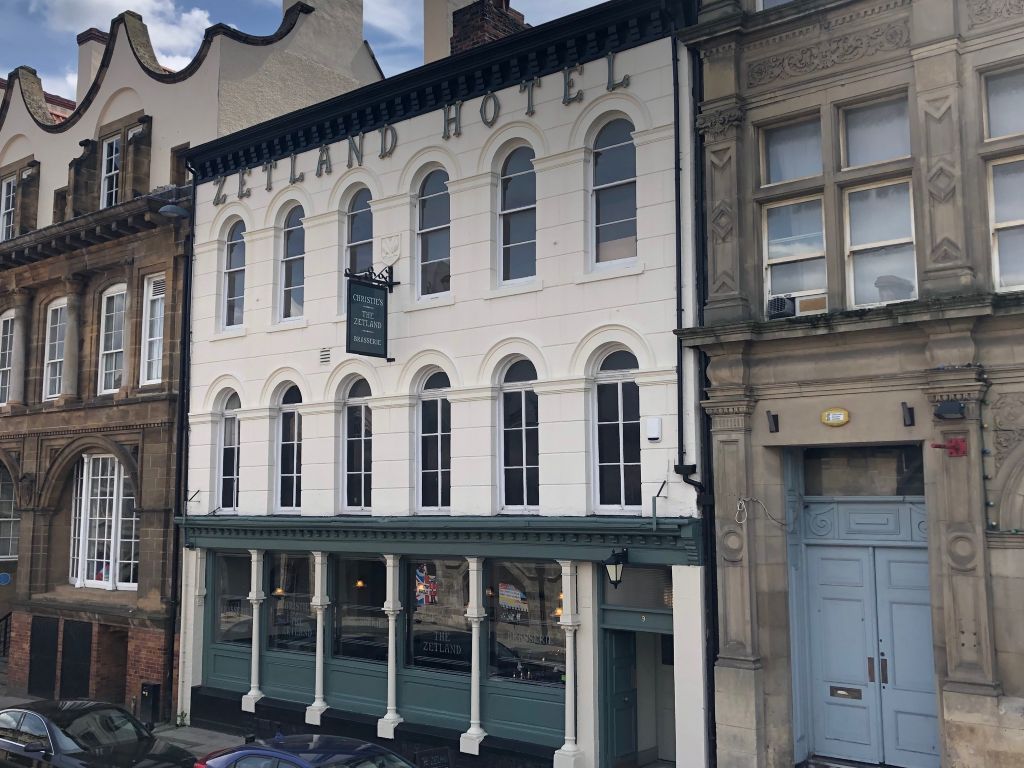
Opposite the railway station is the Zetland Hotel. On the exterior it looks like any other Victorian pub and hotel, albeit with large letters across its frontage.
However, the grandest feature of this building is its interior. This lavish dining room, which has been in place as long as the building, has been maintained and kept as a reminder of the early days of Middlesbrough.
Webb House
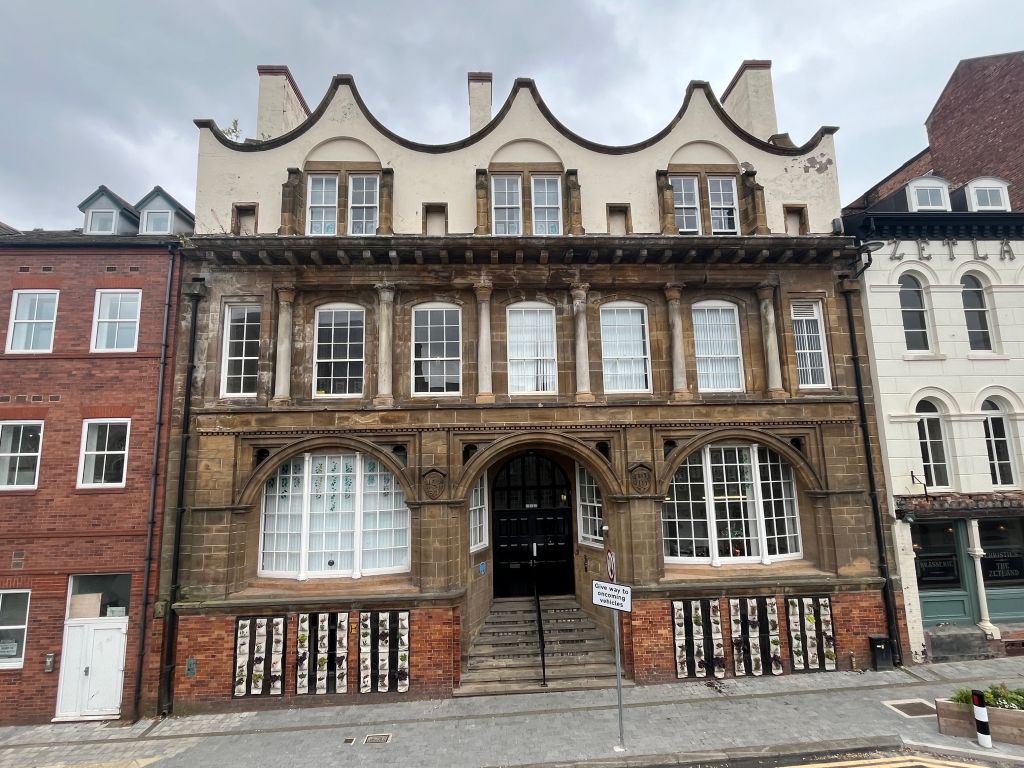
Next door to the Zetland Hotel, on Zetland Road, is one of the most important buildings in Middlesbrough in terms of its architecture.
Webb House dates from the 1880s, it was built as offices for Bell Brothers, and was later used by Dorman Long who were known for their steelmaking on Teesside. It is likely that designs for both the Tyne Bridge and Sydney Harbour Bridge were worked on here.
The building was designed by Philip Webb in the Arts and Crafts style, and has today been converted into sheltered housing.
BOHO Four / Gibson House
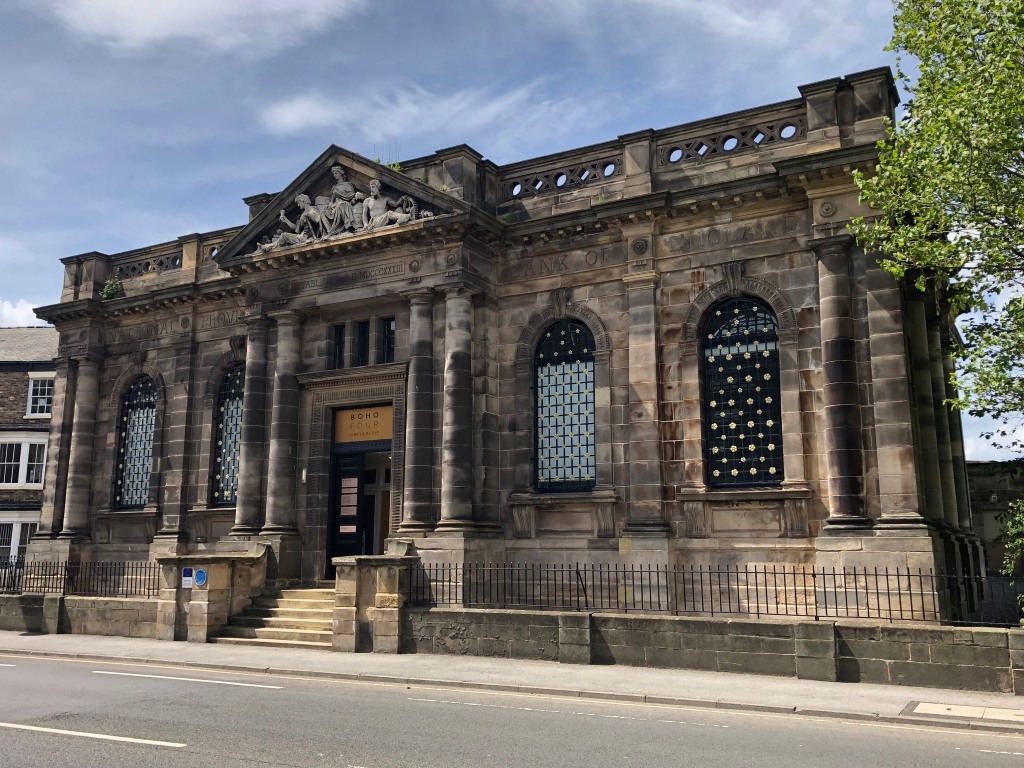
This iconic former bank sits on the corner of Queens Square and Cleveland Street, in the older part of Middlesbrough just north of the Railway Station.
Built in 1870-72 for the National Provincial Bank, it features many interesting architectural features on the exterior, including a sculpture depicting Britannia with ironworker and miner. Later used by the Cleveland Club from the 1930s, it is now private office space.
Which are your favourite Middlesbrough buildings? Which grand buildings do you miss? Leave a comment below.


